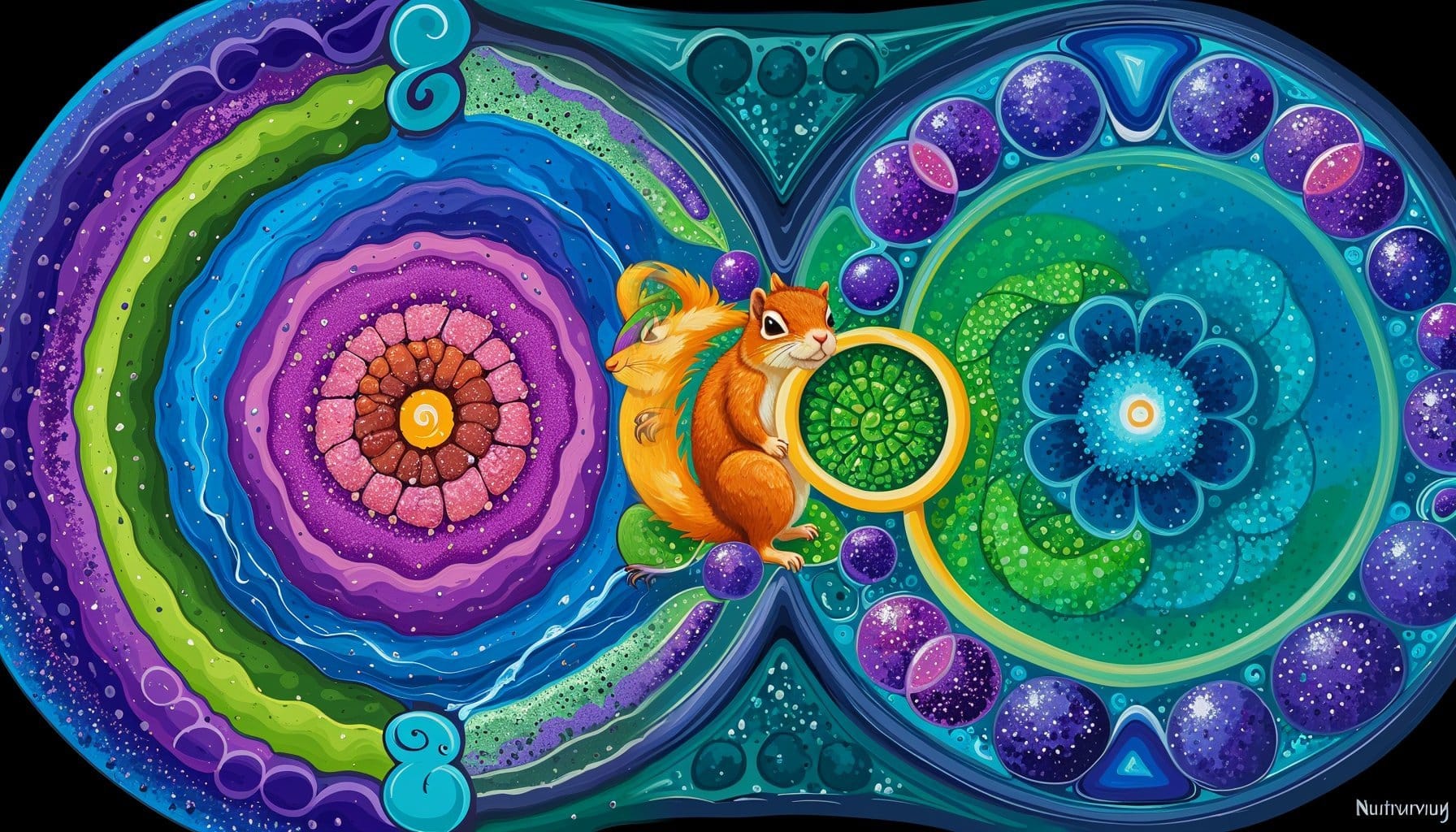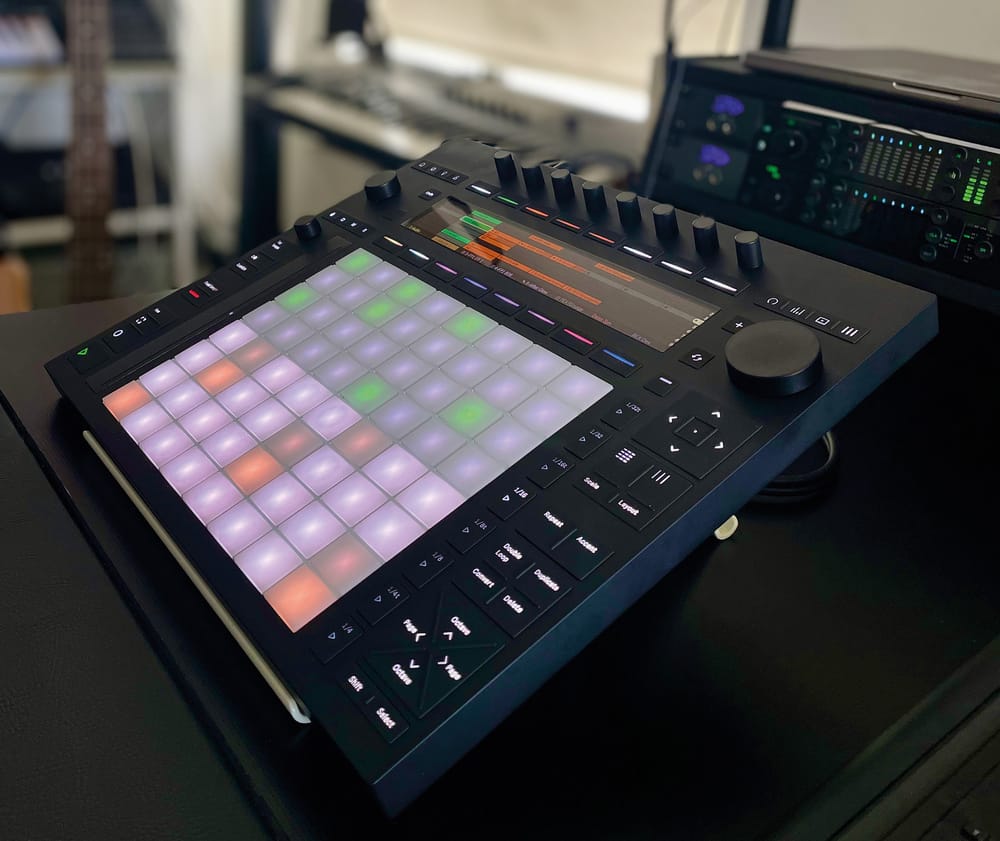Learn how to make lofi beats and music videos with AI tools
Beatmakers are turning to AI music generators to get fresh samples for their Push / MPC / DAW. Then they make AI music videos with this app.

Lofi beats started as an underground genre of instrumental hip hop, combining jazzy chord progressions with offset drum loops and vocal cuts. The culture was defined by crate digging, sampling, and too many hours at the MPC.
OG beat makers like J Dilla and MF Doom put blood, sweat and tears into crafting their style. To understand lofi music, we've really got to go back to the roots and spend time listening to the originals. Other boom bap music producers like DJ Premier and Pete Rock played an important role in nurturing the broader culture.
The sheer volume of new lofi music created each year has led to the emergence of secondary genres like Chillhop. It's a sub-genre with consistently relaxing vibes, in contrast to the more energetic or aggressive boom bap styles.
YouTube playlists like Chilled Cow (aka Lofi Girl) helped Chillhop reach a global audience. Live chat allows fans from around the world to connect and talk about anything, including the beats themselves. Spotify channels cater to lofi music as well, reportedly exceeded 14 million subscribers for some playlists.
In this article we’ll go deeper into what it takes to make lofi music, including some of the most popular resources used by beatmakers. We'll include tutorials to help you choose the best sample libraries and AI tools to get started with.
Want to create animated music videos to go with your lofi beats? Neural frames can take any written concept and turn that text to 25FPS frame-by-frame animations for your lofi video.
Sign up for a free neural frames account here.
What is lofi music?
The lo-fi hip-hop sound we know today was pioneered by Japanese beat maker Nujabes, alongside American artists like Dilla and Doom. These founding artists were constantly searching through deep cuts on classic records, looking for the perfect sample.
Rhythmically, Dilla was known for the special kind of swing he added to drum beats. His offset hi hats and kick drums would dance around the a snare rhythm that was locked in on the second and fourth beat.
This offset boom-bap sound was a natural product of finger drumming on samplers like the MPC. Compared to the quantized drum sounds of trap and EDM, lofi drums have a touch of “human error” that make the rhythm sound a little more free.
Lo-fi music we enjoy today tends to digitally recreate sounds from old-school beat making techniques. Vinyl crackle or the warble of vintage synths are imitated and recreated by DAW plugins to achieve a vintage tone without analog machines.
Where can I find the best lo-fi samples?
There are several marketplaces selling lo-fi samples on the web. Here are a few of our favorite options - we are not affiliated with any of these sellers but we do like their sample packs.
The Kount (for lofi drums) - One of the best starting points for achieving a crisp, best in class lofi sound. The Kount records all of his own drum samples and has impeccable musical swag.
Splice (for individual samples and instruments) - Filter by genre to find tens of thousands of samples across every instrument. If you grab multiple, just make sure they’re in the same BPM and key signature. This will ensure your keyboards, synths, and bass lines play nicely together.
In addition to samples, Splice also sells VST presets to change the sound of your virtual instruments. They will let you hear a sample of the patch, so you can find the sound you’re looking for. I personally recommend using Serum and then downloading FXP files from Splice.
Splice samples and presets are often bundled up with others in a pack. You can purchase them ala cart or obtain the full instrument / sample pack if you prefer.
ADSR (for sample packs) - Searching individual sounds can be a bit time consuming. ADSR Sounds sells full sample packs rather than individual audio clips. Like Splice, they also sell instrument presets and other music production VSTs designed specifically to achieve retro lofi effects with reverb and saturation.
If you find a sample that you like from any of these resources and want to isolate or remove a specific instrument in the sample, check out the free AI Stem Splitter from Sesh.
Of course, you will need to have a DAW to make use of these resources. Most music producers will program their drum patterns on a sequencer and then migrate it into their audio workstation. One-shot music samples can also be triggered this way, but long form melodies and chord progressions are more likely to be programmed in the MIDI piano roll.
Generating lofi beats with artificial intelligence
The past couple of years we’ve seen major breakthroughs in AI music generation. Artists have started creating original lo-fi samples from text descriptions. We’ll cover several of those AI music apps below, so you can explore and find the tool that works best for your needs.
A brief history of AI being used to make lofi music
The majority of “AI music” tools built 3+ years ago are not considered generative AI by today’s standards. Lofi music on these early systems were quantized and lacked the very important swung rhythm that makes the genre so unique.
Near the end of December 2022, Riffusion released a truly generative AI text-to-music app online. The web service used lofi beats in its demo and could in fact create short audio samples that sounded more human than previous “ai music” programs.
In May of 2023, one of Google’s AI music research labs released a text-to-music generator called MusicLM. It created two thirty-second clips, which seemed long compared to Riffusion, but fell short of what some people wanted; a complete song generated by a single text prompt.
Now, in the first quarter of 2024, we are already seeing some major leaps in the quality and capabilities of AI music generators. We'll share our favorite tools next.
SoundGen AI: Our top pick for making lofi beats
Our favorite AI lofi beat generator is SoundGen. You can watch a demo below to see how people are taking existing Splice samples and modifying them with text prompts to get entirely new instrument stems to use in their DAW.
In the demo above, one of our team members (SimulationBeats) shows how he used SoundGen to get similar variations on Splice samples. Their audio-to-audio AI model lets you upload any sample and transform it through text prompts.
SoundGen is a genuine AI music generator. It uses a transformer model trained on the Pond5 catalog, which happens to include a large number of lofi hip hop tracks.
Several dozen tracks in the Pond5 library include J Dilla's name in the metadata, so even though the model is not trained on his style, it understands the relationship between Dilla and swung lofi drum beats.
You don't have to reference any particular artist to make lofi stems. Just type a few words describing what you want and click SoundGen's magic prompt wand. The system will analyze and expand on your request. You can fine tune the prompt further and then, when you're ready, generate your tracks.
Be sure to check out the tutorial above for details on how it all works. SoundGen even includes a video embed option, so you can sync the music up with any existing content that you have. Which brings us to another point - how to make lofi animation with an AI text-to-video service.
How do you create AI animations for lofi music?
We’ve covered most of the essentials on how to getting started with making lofi music. As a company that specializes in AI music videos, we’ve seen a lot of neural frames users using lofi songs to create full length music videos.
If you’re interested in creating animated music videos for your lofi tracks, be sure to check out this tutorial here. We’ll provide step-by-step instructions and you can sign up to neural frames for free to start creating your own animations.
Happy with neural frames but want an alternative to SoundGen? Suno and Splash are two other popular text-to-songs generators that can make lofi beats. Of the two, Suno is better at capturing the rhythmic nuances. Both of them include AI voices that rap and sing lyrics, if you want to go beyond instrumentals.
Why are people using AI to generate lofi music?
The most exciting use case we see for AI music and lofi beats for independent music producers. AI music models can come up with musical ideas that ordinary people might not think to play.
There’s an almost infinite expanse of latent space where new, novel ideas are waiting to be discovered. Seasoned vets have spent years buying sample packs, learning complicated electronic music production techniques, and collecting small monthly checks from distributors like Distrokid or CD Baby.
A new generation of music producers is hesitating to make the same investments. They're experimenting with faster and easier systems as shortcuts to the same outcome.
It's true that the low-fidelity audio of AI models today is well suited for this genre, but you won’t find any apps online that perfectly imitate the lofi sound with complete, 3-minute songs. You’ll need to get your hands dirty in the DAW and sample your favorite AI music clips to get the best outcomes.
What equipment do I need to start making lofi?
Modern music production doesn’t require much more equipment than a computer and a DAW. Over time, it’s common to pick up midi controllers, sample packs, and VSTs depending on a person’s budget.
Early beatmakers used vintage music workstations like the Akai MPC. Today, many prefer to subscribe to sample libraries like Splice. They generate AI music on pay-to-play services and then put everything together in a DAW like Ableton or FL Studio.

The Ableton Push is one of the most popular ways to capture the original feel of finger drumming lofi beats, with the convenience of a modern controller and DAW. Earlier devices like the MPC are iconic, but not necessarily easy to use.
To go beyond sampling and record your own chords or melodies, you may also want to pick up a MIDI controller. Having a digital keyboard will make it easier to record music directly onto a MIDI channel. Otherwise you're stuck programming songs note by note in the piano roll. Live performances gives a more natural feel.
Musicians who do play an instrument may also want to pick up an interface. A common, low-cost option for beginners is Focusrite. You'll need cables to jack into the interface and connect to your laptop, most likely through USB.
We hope this tutorial has been eye opening and provided you with all the info you needed to get started with making lofi music and lofi animations. If you still have questions, be sure to join us on Discord and connect with our community!